Hooks For Fly Tying: Full Article
This is the full article on the best fly-tying hooks.
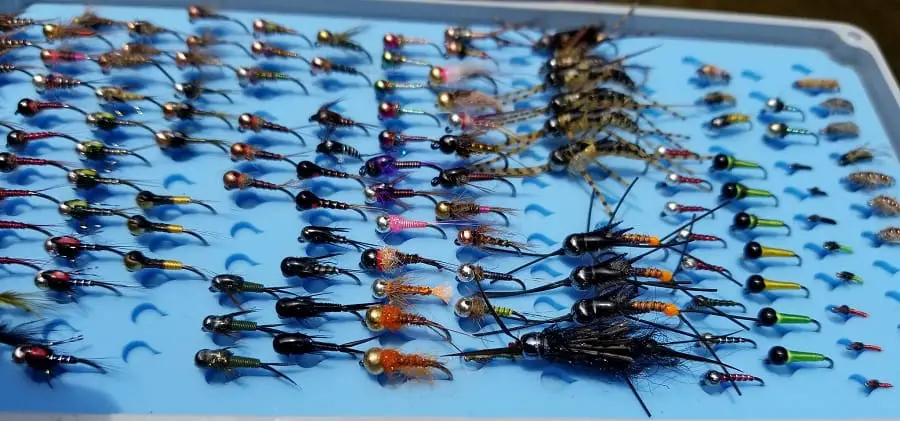
am a fishing guide and a commercial fly tier who has been tying flies for over 30 years. I’m going to be brutally honest about tying hooks.
First, it doesn’t matter if a fly pattern calls for a specific hook; find something close and use it. You do not need to have ten variations of dry fly hooks, streamer hooks, or nymph hooks. One or two variations of good quality hooks is all you need.
Second, bad hooks can bend, break, and even decrease hooking ability. Therefore use good quality hooks.
The best fly tying hooks will be thin but strong, have a gap size that will enable better hookups, have a thin and very sharp point, and will be the right shape and size for the fly pattern you want to tie. You also want a fly hook that can handle the size of fish without breaking or bending.
We may make a small commission from some of the links on this website, which is at no cost to you. I appreciate your support. Learn More
What Are The Best Fly Tying Hooks?
The best hooks for fly tying come from reputable brands that use high-quality metal wire, excel in wire technology, have extremely sharp points, and are proven by guides and anglers not to break.
In my opinion, the best fly-tying hooks I have tested come from:
Other quality brands I use and would recommend are:
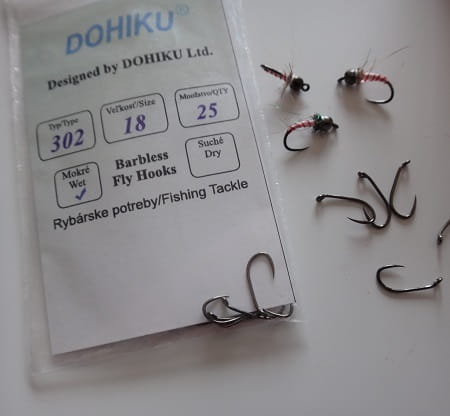
- Fulling Mill
- Firehole Sticks
These are the hooks you will see competition fly anglers and top guides using.
If you want a great hook, which will provide more hookups and one you can rely on, stick with these proven companies.
A fly hook includes elements such as the gape, point, shank, eye, bend, throat, and thickness.
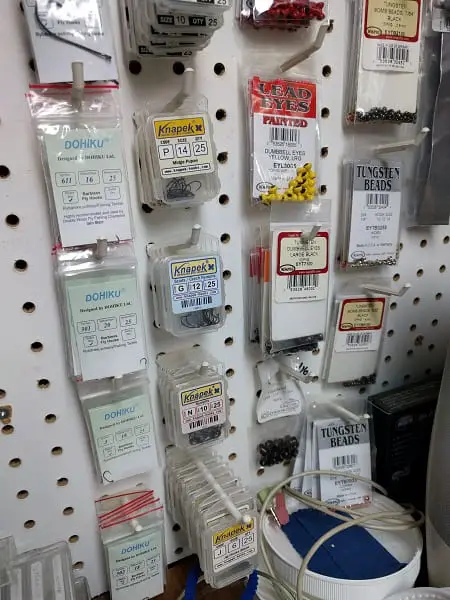
The fly hook you use will depend on the fly pattern you want to tie, which means different fly patterns will require a different shape, size, and strength.
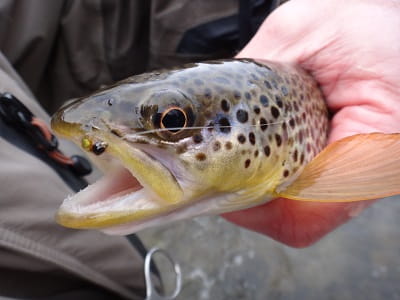
How to Buy the Best Fly Tying Hooks
To find the ideal fly tying hook, consider factors such as;
- Type Of Hook: You want to pay attention to the material of the hook since you want saltwater hooks when fishing in salt water, but not when fishing a local freshwater trout stream. A standard trout hook with a typical bronze coating will rust and be destroyed by the salt water after only 1 or 2 uses.
- Regulations: your local fishing regulations may require or limit hooks by size or type, as an example some areas barbed flies are not permitted
- Personal Preference: your personal preference matters; guys like me prefer certain hooks, and I prefer and use barbless hooks 95% of the time or pinch the barb in the vise with fly tying tool or pliers. Some guys also prefer a certain shape or hook color.
- Quality and Reputation: stick with known quality brands that fit within your budget.
- Chemically Sharpened: Chemically sharpened hooks are known to be the sharpest hooks available and sharp hooks improve hooking percentage.
- Size: buy your fly hook based on the fly pattern and the size of the natural fly you are trying to imitate. Meaning, if all the March Brown mayflies on your local river are a size 14, then tie on a size 14. I will discuss sizes in more detail below.
- Species Specific: Buy species-specific hooks, which means if you are fishing for trout, buy trout fly hooks. But, if you are fishing for steelhead, salmon, bass, pike, musky carp, or another big species those little trout hooks will likely bend or break.
What Makes a Good Fly Tying Hook
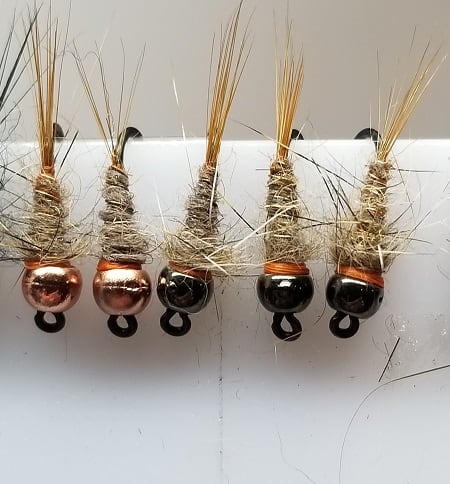
Fly tying hooks are made from metal wire that is bent to shape and there are dozens of shapes and types.
A great hook for fly tying is one that is made from a hardened tempered metal that is very strong for its size and shape and has a chemically sharpened point.
It also needs to be as thin as possible so it’s not seen by the fish, while still maintaining its strength.
A good fly hook matches your specific needs and preferences. It should be made from high-quality materials, have a reliable construction, and offer the right size and shape for the type of fly you’re tying.
Types of Hooks Required For Fly Tying
The type of hook you need depends on the fly patterns you’re tying. Some common hook categories include:
- Hooks for Dry Flies
- Hooks for Nymphs
- Hooks for Streamers
- Hooks for Wet Flies
- Long Shank Hooks
- Scud Hooks
- Grub Hooks
- Egg Hooks
- Saltwater Hooks
If you click the above links they will take to you my pages where I list the best and most effective flies that guide and experts use.
Also, if you’re new to fly tying, having a few great fly-tying book or a book with many fly patterns is a good idea. See my list of the 21 Best Fly Tying Books.
Best Dry Fly Hook
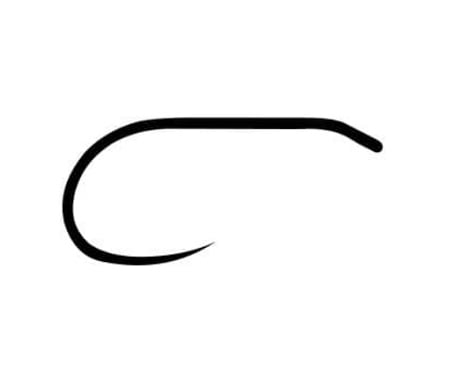
When it comes to tying dry flies and dry fly fishing, it’s all about finding that perfect balance between the hook’s weight, durability, and design to ensure the fly stays afloat while still being effective at hooking the fish.
After tying and fishing thousands of dry flies I’ve found that the traditional standard dry fly hook is not always the best hook. These are things in look for in dry fly hooks.
For dry fly hooks, you’ll want to go for lightweight hooks with fine wire construction which will help your fly float higher and for longer. This means that most trout hooks are not suitable for dry flies.
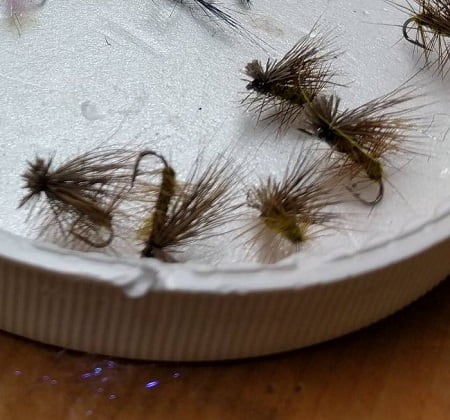
You also want to use a straight shank dry fly hook, with a wide gap. A wide gap provides a better hooking percentage, especially on heavily hackled or bushy-type flies.
Some dry fly hooks will come as 1x long or 2 x long but often this means you get the right length but with less of a gap.
Hook sizes can vary, but generally, you’ll find that sizes 10 to 22 work well for most dry fly patterns.
The correct hook matters and a tip for you is when fishing smaller flies, a medium weight or thicker wire hook is often best to prevent the hook from bending with large fish.
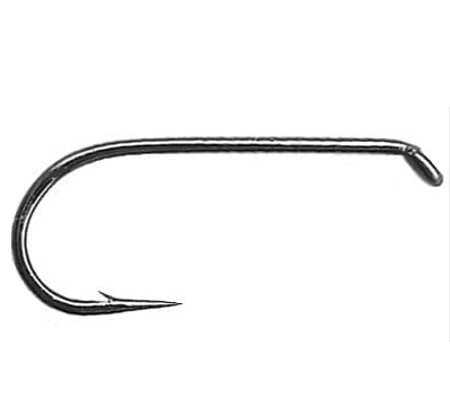
With a big fly on the surface, you want a thin wire hook so it doesn’t weigh the fly down and sink it.
Hook Eye: Make sure to consider hooks with a down-eye or straight-eye design, as they allow for easier tippet attachment and give the fly a more natural presentation. Most down eye hooks are about a 45-degree angle, but anything from a 25 to 45 degrees is generally good.
Unless you are skating flies like buzzers and bomber flies like those used for Atlantic salmon, and up-eye hook is not used often.
A few dry fly hook models that I use starting with my favorite are:
- Hanak Competition 100BL Hooks – My favorite competition style dry fly hook.
- Tiemco TMC100 or the barbless Tiemco 100BL – My favorite standard dry fly hook.
- Daiichi 1170 – Stronger than most other brands’ standard dry fly hook with a mini barb for better hook penetration.
- Daiichi wide gape1100 – good for very small flies due to the slightly wider gape and bigger eye.
- Ahrex FW500 Dry Fly Hooks
- Ahrex FW524 Super Dry Hooks – for Klinkhammer style dry flies
Best Nymph Hook
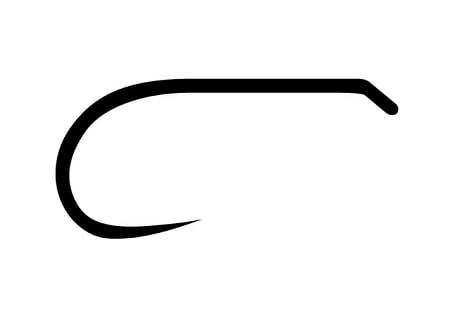
I may be a little different because I like to tie my nymphs on both straight nymph hooks and on curved scud or sedge hooks.
I’ve seen plenty of nymphs drifting down the river and they are not always straight bodied so a slight curve is OK.
Traditional or old-school nymph hooks were designed with a closer gap so I no longer use and recommend them. There is a reason the top competition anglers in the world all prefer wider gap competition style hooks.
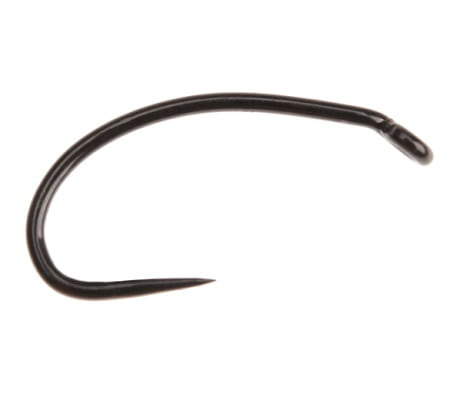
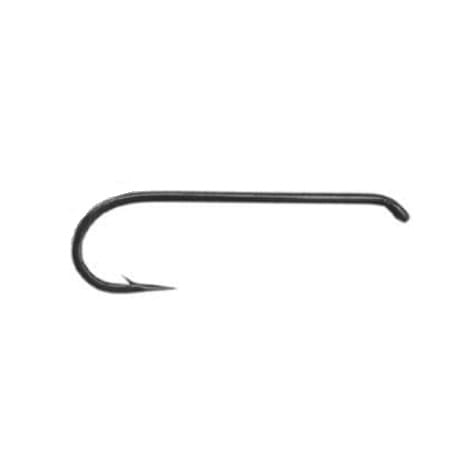
I would say 70% of my nymphs are tied on straight hook shank hooks like the:
- Tiemco TMC 113BLH Nymph Fly Hooks
- Ahrex FW540 Curved Nymph Hooks
- Hanak Competition 290BL Nymph/Wet Hooks
I do not like the shape of hooks like the curved Nymph Long Hooks simply because of the small hook gap which I have found to miss a lot of fish. Instead, stick with hooks with a wide hook gap.
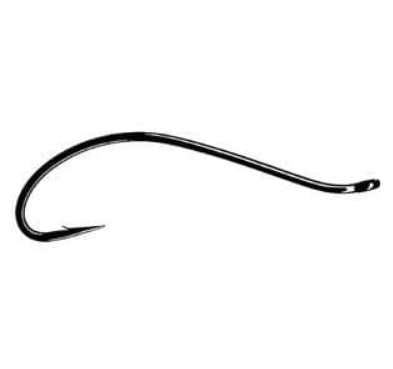
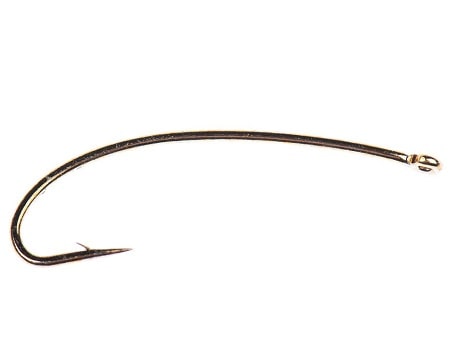
Scuds, Caddis Pupae, Grubs, Isopods, Shrimps
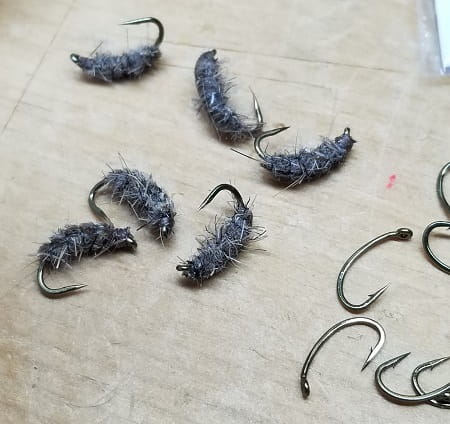
Many streams have caddis, scuds, and isopods, and in my area, scuds account for a lot of the big trout my clients land each year.
For these nymph patterns, a scud hook or a sedge hook will work well.
These hooks are strong even in smaller sizes and are readily available in the market.
- Tiemco TMC 2488H Heavy Nymph Fly Hooks – I use these a lot, and I use them when I need superior strength with my tiny flies in sizes 16 to 22. I’ve landed 26-inch brown trout on size 20 with these extra-strong hooks.
- Tiemco TMC 2457 Shrimp And Caddis Pupae Hooks – The name says it all.
- Tiemco TMC 2487BL Barbless Shrimp And Caddis Pupae Hooks
Jig Fly Hooks
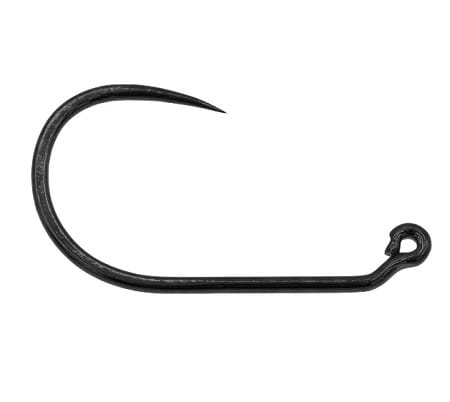
In recent years more and more anglers are tying their nymphs on jig fly hooks.
The advantage to using a jig fly hook is that the hook point rides up which is great for dragging flies across the bottom and for preventing fewer snags.
I’ve been using competition-style jig fly hooks for about 5 years and I find the wider gap and slight downward hook point hooks and holds the fish better than standard jig hooks.
In fact, if it works for the pattern, I now prefer to tie most of my nymphs on jig hooks.
Jig hooks to consider are:
- Hanak’s Competition 470BL Jig Wave Hook
- Hanak’s Competition 400BL Jig Classic Hook
- TIEMCO TMC 403BLJ BARBLESS JIG NYMPH HOOKS
Streamer Fly Hooks
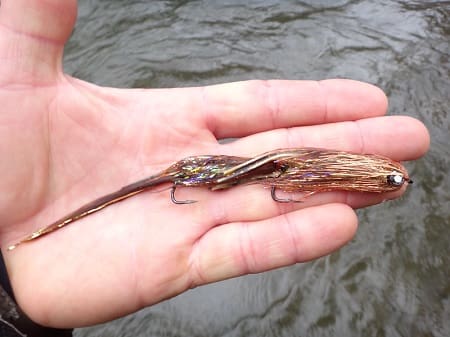
Traditional streamer hooks suck!
Yep, you heard me. They are long but the hook gap on them is small and often the gap will get smaller once you add all that bulky body fly tying material to it.
My advice to you is to go with a larger gap more modern streamer hook and I promise you will catch more fish.
Consider these streamer hooks.
For simple Wooly Buggers, zonkers, and more traditional streamer patterns that dont require such a large hook gap, I use Daiichi 1750 Straight Eye Streamer Hooks
For barbless streamer fly hooks check out the Hanak Competition 970BL Streamer Wave Hooks.
Best Fly Tying Hooks For Egg Patterns
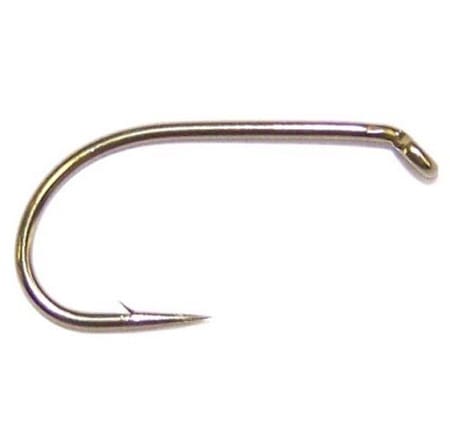
Whether you fish steelhead and salmon or trout, an egg pattern is hard to beat at times and they should be in every river anglers box.
You don’t need to get to in-depth just be sure you go with a shorter shank hook, with a razor sharp point, and a wide gape.
The gape or “gap” is important because the fly tying materials used for an egg pattern can clog up the gap on some hooks which can prevent hooking the fish.
When tying egg patterns, I use:
- Raven Specimen hooks in sizes 8 to 12
- Daiichi 1510 Glo-Bug Hook
- Gamakatsu C14S Glo-Bug Hooks in 8 to 14
Barbed Hooks VS. Barbless Hooks, Does it Matter?
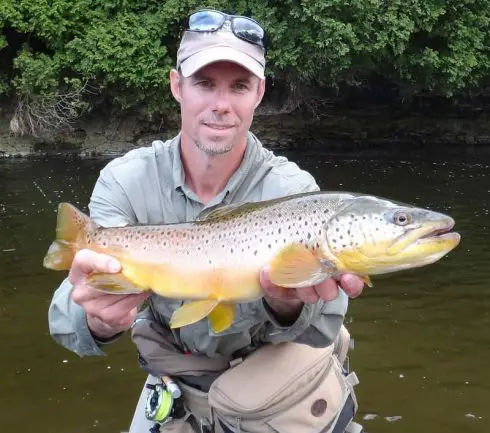
The choice between a barbed hook and a barbless hook depends on local fishing regulations and your personal preference.
For most fly fishing I prefer a hook with no barb and I will often pinch the barb down with pliers, especially when doing catch and release.
Although a hook with a barb will help keep fish on the hook longer, they also cause more damage when removing the hook, and if you are like me and fish with total beginners, a hook with a barb hurt a lot more when you hook yourself, and they hurt even more when coming out.
Hooks without a barb have some advantages which include less damage to the fish, and because there is no barb on the hook penetration is usually better. Many guides and competition fly anglers use hooks with no barbs.
I find the hook holding ability of a barbless hook to be almost identical when fighting big fish, but little trout that shake and roll will come off easier, which I’m OK with since I’d rather not get my hands wet and slimy, and come off prematurely means less time wasted on the small fish, more time trying to get the big ones to bite.
Store Bought Flies And Cheap Hooks
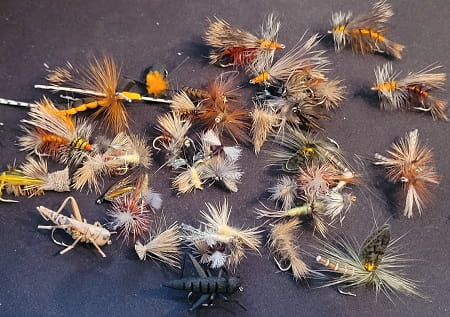
I’m going to be straight up and honest here, usually, big box stores buy discount flies from tying companies that use very cheap hooks.
The hooks they use are basic and they don’t take into consideration hook gaps and sharp points, both of which are important when catching fish.
Cheaper hooks are also prone to bending when pulled on logs, rocks, and big fish, they’re not as sharp, and the hook points are more susceptible to bending or breaking.
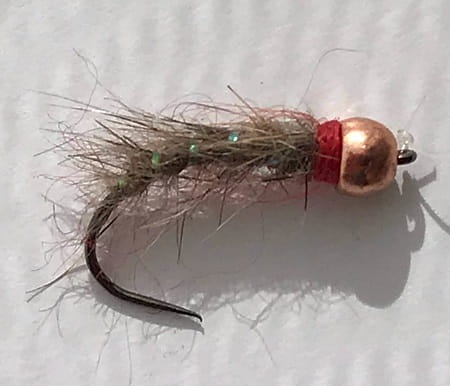
Bending can occur on big fish and if it does you will likely lose your fish. I check the hook band and the hook point after snagging on rocks and logs and the high-end tempered hooks rarely have hook point breaks or bends as you see in the image below.
Stick with quality hooks if you want more fish and fewer problems.
Material and Construction
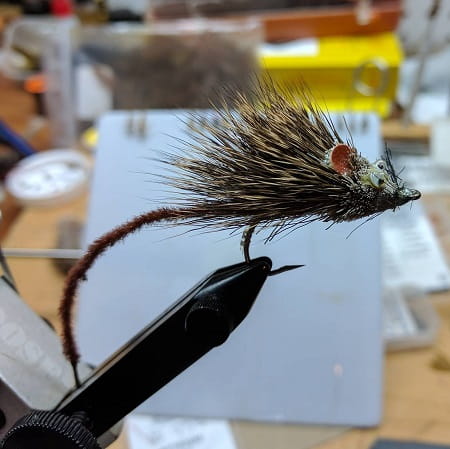
High-quality hooks are typically made from materials like carbon steel, stainless steel, or high-carbon steel. The construction should be durable and resistant to corrosion, ensuring a long-lasting hook.
By the appropriate hook for freshwater fishing or saltwater fishing.
Long or Short Hooks?
The choice between long and short hooks or normal-length hooks depends on the fly pattern you’re tying and the intended purpose. Longer hooks offer more space for materials, while shorter hooks provide a more compact profile.
However, some hooks are extra long and you will see the description 1 XL, or 2 XL. These hooks are longer than normal but still have the same hook gap as a regular-length hook shank. For this reason, I would rather upsize the hook to a larger hook with the same length but a wider hook gap.
You can also find short hook shanks that are shorter than normal.
Temper
Tempering refers to the heat treatment process that strengthens the hook. Well-tempered hooks are more durable and resistant to bending or breaking. Stick with quality brands and you shouldn’t need to worry about the temper and strength of your hook.
Finishes
Hook finishes, such as black nickel, bronze, or gold, can affect the hook’s visibility in the water and corrosion resistance. For all your river fishing flies stick with bronze, black, or black nickel finishes.
I never use gold hooks and I find the gold hooks are usually the cheaper ones that bend and break. I mostly use bronze or black.
What is the Ideal Size of Fly Tying Hooks?
The ideal hook size depends on the type of fly you’re tying and the target species. Hook sizes range from 1 to 30, with size 1 being the largest. Be sure to use a hook size that matches the natural food source as closely as possible.
What is the Ideal Tying Hook?
The ideal tying hook is one that best suits your specific needs, and preferences, and makes your fly initiate the natural food sources the best.
More About Fly Tying Hooks and Their Construction
The size and the shape of the hook can be important or at least interesting to know. Below I discuss the terms of a fly hook and some things to consider.
Hook Sizing and Gape
Hook sizes typically range from 1 to 30, with size 1 being the largest and decreasing in size as the numbers increase. Hooks larger than size 1 utilize the “aught” scale, where larger numbers signify bigger hooks. Manufacturers determine hook sizes based on the gape, or the space between the shank and the point.
To expand their selection, companies often provide supplementary information alongside the hook size, such as “1XL” or “1XSTRONG.” These designations indicate deviations from standard length or wire gauge, enabling customers to find hooks tailored to their specific needs.
The Shank
The shank, the longest part of the hook, functions as the foundation for attaching materials during fly tying. It can be either straight or curved, each serving distinct fly patterns. Long shank hooks give more length for tying materials but be sure your fly is proportional so it remains realistic.
In some cases, a long shank like on a streamer fly will improve hook sets./.
The Throat
Situated between the bend and the point, the throat is a frequently overlooked component. This area houses the barb, if present, and can vary in length, potentially influencing a hook’s performance.
The Point
The hook’s point is crucial for successfully hooking a fish. Ensuring that your hook is sharp is essential for effective penetration and secure hooking. Hook points come in various styles, including spear, needle, rolled in, hollow, and knife edge. The choice of hook point depends on the angler’s preference and the type of fishing being done.
The Barb
The barb is an additional point running backward at an angle from the hook’s tip. Its presence may be subject to local fishing regulations or personal preference. Barbs can help keep a fish on the hook longer but may cause more damage to the fish.
The Eye of the Hook
Hook eyes come in a variety of shapes and orientations, such as ring or brazed, needle, tapered, looped, straight, down, up, and jig. Each type serves a specific purpose or is suitable for particular fly patterns.
The Bend
The round bend is another crucial component of the hook which gives the hook that J or rounded shape. In some cases, the round bend is slightly angled on some hooks but I prefer the round bend.
Best Hooks For Fly Tying Conclusion
The few brands I mentioned will have everything you need for all your fly patterns so even if it sounds confusing, it’s not. Your local fly shop will have at least one of these brands and they can provide advice on hooks for larger fish and the right hooks from a small wet fly hooks to large nymph patterns.
The preferred choice of good anglers are hooks that are sharp and penetrate well, hold well, and don’t bend or break even with flies in smaller sizes.
Question: What to Consider When Buying the Best Fly Tying Hook?
Answer: When purchasing fly tying hooks, consider the type of flies you’ll be tying, the fishing environment, and the targeted species. Also, consider factors such as hook size, material, construction, and whether you prefer barbed or barbless hooks.
If you have a question or some tips about fly tying hooks or you want to share your favorite hooks, let me know in the comments section below.
Tight Lines,
Graham
